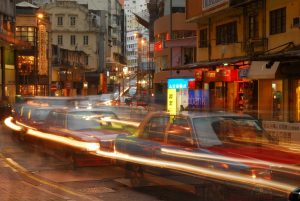The governance of Hong Kong, a special administrative region of the People’s Republic of China, has been a highly contested issue between China and the United States for quite a long time and for a number of reasons. All seems to be connected with Hong Kong’s unique “role” between mainland China and the international community, particularly the Western world, which has long valued Hong Kong’s special location, economically, ideologically, and geopolitically.
While squabbling about the deteriorating situation in Hong Kong, many barely noticed that the year of 2019 was a “year of protest” around the world. In December 2019, FAIR, an American national media watch group that has been “challenging media bias since 1986,” conducted a study of New York Times and CNN coverage of four important protest movements in 2019: those in Hong Kong, Ecuador, Haiti, and Chile. The study shows that by November 22, 2019, the New York Times and CNN had carried 737 stories on the Hong Kong protests, 12 on Ecuador, 28 on Haiti, and 36 on Chile. Why is Hong Kong so important and eye-catching in international media narratives recently? Are the “democratic appeals,” which should be “universal” by Western standards, in Ecuador, Haiti, and Chile less important than those in Hong Kong? Or is the special attention because Hong Kong is the city located between the increasingly confident and strong mainland China and other parts of the world?
In recent years, the “internationalization” of the Hong Kong issue has been a significant bone of contention between Beijing and Washington. Both sides have spared no effort to voice their views on the subject at many regional and international fora. The U.S. policies on Hong Kong, including its strategies and tactics to involve itself in the Hong Kong issue, can be an important part of Washington’s long-term strategy to cope with Beijing.
China has been working hard to modernize its national governance system, and “fully and accurately” implementing “one country, two systems” in Hong Kong is an essential part of this grand endeavor. New developments in the Hong Kong issue, especially over the last year, suggest that Beijing has been strongly convinced that the U.S. policies and actions regarding Hong Kong are just a tool for Washington to “disrupt” Beijing. The U.S. Hong Kong approach is viewed as part and parcel with other acts, for example, the trade war measures orchestrated to initiate a certain level of bilateral “decoupling”; bans on high tech exports; blocking personnel exchanges; an ideological media campaign; and so on. Many in China, and maybe also in the United States, believe that this whole campaign is part of Washington’s push-back against Beijing’s growing confidence — confidence that obviously includes China’s reactive but decisive implementation of a National Security Law in Hong Kong, after 23 years of waiting.
By continuing to make the Hong Kong issue into an “international” concern, including by threatening to strip Hong Kong of its special status, Washington has two goals in mind. First, to prove that its “strong commitment to Hong Kong’s democracy and freedoms” still stands firm — even it is calling for a coordinated sanctions among the West against Hong Kong. Second, the United States seeks to demonstrate to Beijing that its growing concerns with China and its communist regime now have reached an unprecedented and maybe dangerous level, and the Hong Kong issue can be a “trigger.”
Unfortunately, many Western media and politicians have not told the world the whole story of what happened in Hong Kong. In most Western media narratives, Hong Kong protesters were all peaceful, innocent, and self-controlled young citizens, despite the truth that a number of well-organized mobs brutally assaulted Hong Kong citizens who held different views, burned public facilities, and even stabbed Hong Kong police officers who were performing official duties. One video clip shows that when the mobs beat an innocent citizen who disagreed with them, the “peace-loving” young Hong Kong protesters in black shirts automatically surrounded the fight, holding up their umbrellas to block the violence from view.
In the name of “supporting” Hong Kong protesters, a series of bills, resolutions, and acts on Hong Kong have been passed in the U.S. Congress in recent months, some of which have been signed into law by the U.S. President Donald Trump. A few days ago, the U.S. government finally announced the revocation of Hong Kong’s special status in its trade relations with the United States. Inevitably, there would be consequences, but the harms may prove to be more symbolic than substantive, partially because Hong Kong’s direct trade volume with the United States has remained limited. An article from the New York Times noted that:
The effect of the new restrictions announced Monday appears to be relatively limited in scope, given the small volume of trade the United States does with Hong Kong. Hong Kong represented just 2.2 percent of American exports in 2018, with defense and high-technology items making up a sliver of that.
The Chinese People’s Congress did not pass any “George Floyd” resolution or act to make a stand when racial problems and conflicts once again became a hot issue in the U.S., as doing so would constitute interference in the internal affairs of the United States.
As a part of China’s sovereignty and territory that enjoys high autonomy, the “special status” recognized by the United States is nevertheless important for Hong Kong. But what makes Hong Kong important comes from a much wider range of elements and infrastructures, including mainland China’s ever-growing economy and its series of preferential policies for Hong Kong. At the end of the day and in any scenario, despite what Beijing and Washington agree or disagree on at the current moment, a stable and prosperous Hong Kong serves everyone’s interests, including the Hong Kong SAR that returned to China over two decades ago.

































